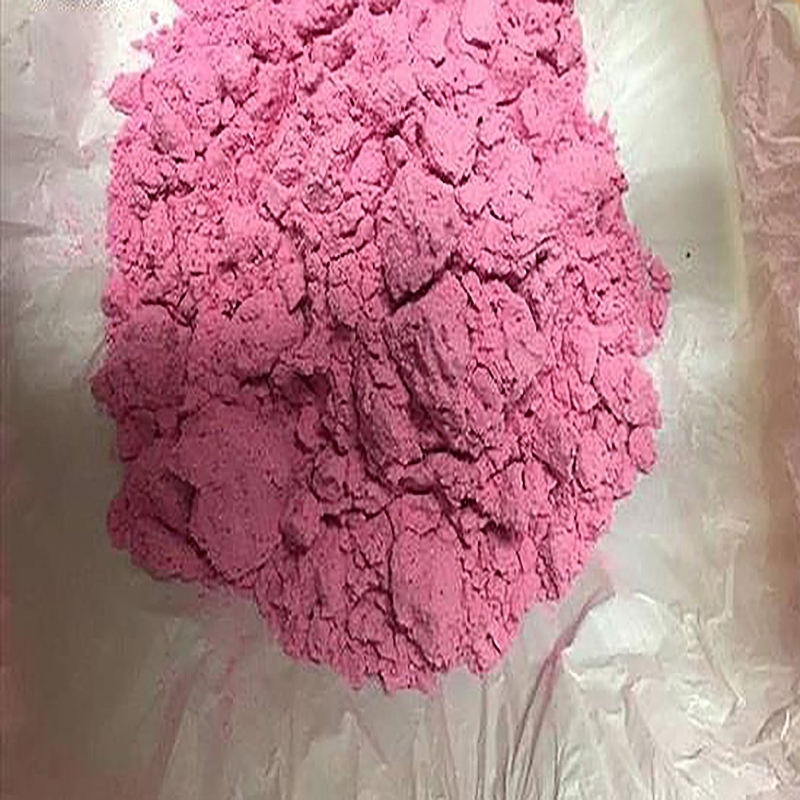-
Categories
-
Pharmaceutical Intermediates
-
Active Pharmaceutical Ingredients
-
Food Additives
- Industrial Coatings
- Agrochemicals
- Dyes and Pigments
- Surfactant
- Flavors and Fragrances
- Chemical Reagents
- Catalyst and Auxiliary
- Natural Products
- Inorganic Chemistry
-
Organic Chemistry
-
Biochemical Engineering
- Analytical Chemistry
-
Cosmetic Ingredient
- Water Treatment Chemical
-
Pharmaceutical Intermediates
Promotion
ECHEMI Mall
Wholesale
Weekly Price
Exhibition
News
-
Trade Service
More than 30% of patients undergoing cancer treatment have pain, and the incidence of pain in advanced cancer patients is close to 70% , of which about 1/2 is moderate to severe pain
More than 30% of patients undergoing cancer treatment have pain, and the incidence of pain in advanced cancer patients is close to 70% , of which about 1/2 is moderate to severe pain
Studies have found that primary-level medical staff have a low awareness rate of cancer pain diagnosis and treatment standards, and lack of professional knowledge in the face of various authoritative cancer pain guidelines, and there are certain difficulties in formulating individualized cancer pain diagnosis and treatment plans
Regarding the diagnosis and treatment of clinical cancer pain, the former National Health and Family Planning Commission issued the 2018 version of "Cancer Pain Diagnosis and Treatment Standards"
Therefore, this article intends to conduct a comparative interpretation of the latest editions of the guidelines for diagnosis and treatment of cancer pain in China and the United States in order to provide a reference for the majority of primary-level clinicians to formulate individualized cancer pain drug treatment plans
Cancer Pain Diagnosis Standard Cancer Pain Diagnosis Standard Diagnosis
The International Association for the Study of Pain (IASP) defines pain as an unpleasant feeling or emotional experience related to or brought about by actual or potential tissue damage
The International Association for the Study of Pain (IASP) defines pain as an unpleasant feeling or emotional experience related to or brought about by actual or potential tissue damage
Cancer pain assessment differences Cancer pain assessment differences
Diagnosis and treatment of cancer pain norms emphasize reasonable premise for effective pain treatment of cancer pain is a standardized assessment , carried out in accordance quantify, conventional, dynamic and comprehensive set of principles in the application process , should patients admitted8h for the first time in the assessment , focusing on the patients The most severe and mildest pain levels in the past 24 hours were quantified
Diagnosis and treatment of cancer pain norms emphasize reasonable premise for effective pain treatment of cancer pain is a standardized assessment , carried out in accordance quantify, conventional, dynamic and comprehensive set of principles in the application process , should patients admitted8h for the first time in the assessment , focusing on the patients The most severe and mildest pain levels in the past 24 hours were quantified
A comprehensive evaluation within 24 hours of the patient's admission , mainly refers to a comprehensive evaluation of the location, nature, extent and analgesic treatment of the pain
The course of treatment were sustained dynamic assessment , for cancer pain patients require dose titration of opioids , recommended continued attention to changes in pain , good dynamic assessment and timely recording of medication type, pain and changes in condition
NCCN Cancer Pain guidelines pointed out , should be subject to regular pain in patients with cancer pain each time contact with screening screening , if pain continues to observe , if there is pain need for routine pain assessment, and stressed that severe pain is not under control It is a medical emergency and should be dealt with immediately
If the patient has new pain or worsening pain , a comprehensive pain assessment must be performed , and persistent pain must be assessed regularly
The purpose of a comprehensive assessment is to clarify the cause of pain to determine the best treatment plan .
• Pain location ( can be divided into well-located pain, radiating pain or metastatic pain ),
• pain intensity (24h in the most serious and minor and the current pain intensity , pain intensity at rest and exercise ),
• Pain nature ( soreness, throbbing pain, tingling and tenderness, biting pain, cramping pain and sharp pain are often associated with visceral pain , burning pain, discharge-like pain, gunshot-like pain and tingling pain are often associated with nerve damage Sexual pain related ),
• Behaviors that affect pain ,
• Factors that aggravate or reduce pain and current treatment options
.
.
• Possibility of patients to abuse opioids
.
.
Cancer pain grade
Cancer pain degree classification Cancer pain degree classificationThe standard of diagnosis and treatment of cancer pain in China divides the degree of pain into 3 grades .
According to the actual situation of the patient, the visual analogue scale ( VAS) , the numeric rating scale (NRS) and the facial expression score scale (faces ) can be adopted.
pain scale, FPS) and other three pain scoring methods
.
According to the actual situation of the patient, the visual analogue scale ( VAS) , the numeric rating scale (NRS) and the facial expression score scale (faces ) can be adopted.
pain scale, FPS) and other three pain scoring methods
.
The NRS pain score of 0~3 is divided into the mild pain category , the NRS pain score of 4~6 is divided into the moderate pain category , and the NRS pain score is 7~10 points are divided into the severe pain category
.
.
The NCCN Cancer Pain Guidelines also divide the NRS pain score of 1 to 3 into the mild pain category , but divide the NRS pain score of 4 to 7 into the moderate pain category , and the NRS pain score ≥ 8 points to the severe pain category
.
.
Individualized medication plan
Individualized medication planIndividualized medication planMild pain medication regimen
Mild pain medication regimen Mild pain medication regimenDiagnosis and treatment of cancer pain can be mild pain specification recommends use of non-steroidal anti-inflammatory drugs , and pointed out that if we can achieve good analgesia , and no serious adverse reactions , may also consider the use of strong opioids
.
.
NCCN recommends the first choice of non-opioid drugs and adjuvant treatments , including non-steroidal anti-inflammatory drugs, Chinese herbal medicines with or without other auxiliary analgesics, antispasmodics and non-drug treatments
.
.
In addition , for patients with opioid tolerance, the need for opioids needs to be reassessed , and other non-opioids or other non-drug treatments can be used to reduce the dose of opioids as appropriate
.
.
Medication Program for Moderate and Severe Pain
Medication Program for Moderate and Severe Pain Medication Program for Moderate and Severe PainPain treatment of moderate pain optional specification indicates weak opioid or low doses of strong opioids , and the combination of non-steroidal anti-inflammatory drugs , as well as auxiliary analgesic drugs ( including antidepressants, anticonvulsants And sedatives )
.
.
Severe pain preferred strong opioids , and the combination of non-steroidal anti-inflammatory drugs , as well as auxiliary analgesic drugs ( including antidepressants, anticonvulsants and sedatives )
.
.
The NCCN Cancer Pain Guidelines suggest that patients with moderate pain should be given the following two methods: ①Opioids should be given as needed on the basis of the use of non-opioids and adjuvant therapy
.
② Initiate the on-demand titration to give short-acting opioids
.
.
② Initiate the on-demand titration to give short-acting opioids
.
The recommended drugs are oxycodone immediate-release tablets 5 mg ± acetaminophen tablets 325 mg , dihydrocodeinone 5 mg + acetaminophen tablets 325 mg , dihydromorphone 2 mg orally , and morphine immediate-release tablets 5 to 7 mg orally , if every day Need to administer 3 to 4 times , consider adding long-acting opioids
.
See Figure 1
.
.
See Figure 1
.
Figure 1 The 2020 National Comprehensive Cancer Network guidelines recommend dosing regimens for patients with severe pain
Figure 1 The 2020 National Comprehensive Cancer Network guidelines recommend dosing regimens for patients with severe painOpioid dose titration protocol
Opioid Dose Titration Scheme Opioid Dose Titration SchemeChina's cancer pain diagnosis and treatment standards recommend that patients with cancer pain who have an NRS pain score of 4 or more and are first used opioid for pain relief should use morphine immediate-release tablets for dose titration
.
.
For patients with cancer pain opioid tolerance , if poorly controlled pain , it can be based on the use of opioids on the current , short-acting morphine immediate release tablets titration , patients titration method using the same initial opioid analgesic
.
See Figure 2
.
.
See Figure 2
.
Figure 2 China 2018 edition of the standard short-acting opioid titration method for cancer pain diagnosis and treatment
Figure 2 China 2018 edition of the standard short-acting opioid titration method for cancer pain diagnosis and treatmentMaintenance medication regimen
Maintenance medication program maintenance medication programDiagnosis and treatment of cancer pain specification states that , for patients with cancer pain control relatively stable long-term use of opioids should be given to opioid sustained release dosage form , while the spare short-acting opioid rescue breakthrough pain
.
.
When the patient has an outbreak of pain , short-acting opioids ( such as oral immediate- release morphine, oral immediate- release oxycodone, morphine or oxycodone injection, etc.
) are administered immediately for rescue .
The recommended rescue dose is 10 % of the daily background dose.
%~20%
.
) are administered immediately for rescue .
The recommended rescue dose is 10 % of the daily background dose.
%~20%
.
As 1d short-acting opioid rescue the number > 2 when views , considering the front 24h breakthrough pain a dose in terms of long-acting rescue opiate doses to increase in background
.
.
The NCCN Cancer Pain Guidelines suggest that for short-acting opioids to control stable chronic persistent pain , it is recommended to switch to long-acting preparations such as sustained-release preparations as a basic analgesic plan
.
According to the patient's expected pain status of the disease , it is converted into long-acting opioids , and the initial dose is 50%-100% of the daily required dose
.
.
According to the patient's expected pain status of the disease , it is converted into long-acting opioids , and the initial dose is 50%-100% of the daily required dose
.
The treatment recommendations for outbreak pain are consistent with our guidelines .
To administer short-acting opioids , the rescue dose is 10%-20% of the daily background dose , or the oral opioid dose should be increased every 1 hour .
To administer short-acting opioids , the rescue dose is 10%-20% of the daily background dose , or the oral opioid dose should be increased every 1 hour .
Opioid dose reduction and discontinuation
Reduction and withdrawal of opioidsOpioid reduction and withdrawalIf the specification recommends treatment of cancer pain opioid require dose reduction or discontinuation , the proposed manner of decreasing dosage , opioids can be reduced in accordance with the daily 10% to 25% of the dose , until the day opioid equivalent dose 30mg The dose of oral morphine can be discontinued after 2 days .
The NCCN Cancer Pain Guidelines states
The NCCN Cancer Pain Guidelines point out that the NCCN Cancer Pain Guidelines point out• When the patient's disease is well controlled, outbreak pain is rare, no precipitating events that cause acute severe pain, or pain is relieved by the use of non-opioid treatments , you can consider reducing the opioid dose by 10% to 20%
.
.
• If the patient has an intolerable and difficult-to-manage adverse reaction and the NRS pain score is less than or equal to 3 points , consider reducing the weight by 25% and re-evaluate and follow up closely
.
.
• If the patient has a major safety problem , consider reducing the dose by 50% to 75%
.
.
Prevention and treatment of adverse reactions of opioids
Prevention and treatment of adverse reactions of opioidsThe description of the norms of cancer pain diagnosis and treatment in China is relatively brief , and related prevention and treatment drugs include antiemetics ( metoclopramide and serotonin receptor 3 antagonists ) , antidepressants and laxatives, and it is proposed that opioids should be routinely used for pain relief.
Laxatives
.
Laxatives
.
The NCCN Cancer Pain Guide lists detailed treatment recommendations .
Related adverse reactions include constipation, nausea and vomiting, itching, dizziness, drowsiness, urinary retention, delirium and cognitive impairment, respiratory depression, etc.
, and preventive measures for each of the adverse reactions mentioned.
, The treatment plan for persistent or worsening symptoms ( including the specific dosage ) are described in detail
.
Related adverse reactions include constipation, nausea and vomiting, itching, dizziness, drowsiness, urinary retention, delirium and cognitive impairment, respiratory depression, etc.
, and preventive measures for each of the adverse reactions mentioned.
The prevention ( including specific dosage ) such as the treatment plan for the persistence or aggravation of symptoms are described in detail
.
Discussion on
Discussion on the discussion onAccording to the US Centers for Disease Control and Prevention , about 72,000 Americans died of opioid abuse in 2017 .
The consumption of opioids in China has been at a " very poor " level
.
In China, only 41% of cancer pain patients can be effectively alleviated, and only 25% of patients with advanced cancer pain can be effectively alleviated
.
.
In China, only 41% of cancer pain patients can be effectively alleviated, and only 25% of patients with advanced cancer pain can be effectively alleviated
.
Chinese cancer pain patients’ worries about opioid addiction and the traditional “ pain tolerance ” concept have led to their negative attitude towards opioid use
.
Based on the above factors, China's cancer pain guidelines are more active than NCCN in classifying the degree of cancer pain and recommending the use of opioids for mild and moderate cancer pain .
.
Based on the above factors, China's cancer pain guidelines are more active than NCCN in classifying the degree of cancer pain and recommending the use of opioids for mild and moderate cancer pain .
The NCCN Cancer Pain Guidelines of the United States are more detailed in the details of opioid titration, opioid tolerance, opioid dose conversion, opioid reduction, and prevention and treatment of adverse reactions, which are more instructive for the individualized treatment of primary clinical cancer pain in China
.
.
All in all, the guidelines of the two countries have their own characteristics.
In the individual treatment of cancer pain drugs, clinicians need to choose the appropriate guide content as a reference according to the specific condition of the patient
.
In the individual treatment of cancer pain drugs, clinicians need to choose the appropriate guide content as a reference according to the specific condition of the patient
.
References : Li Hui , Rao Yuefeng .
Comparative interpretation of Chinese and American guidelines for the diagnosis and treatment of cancer pain [J] .
China Medical Herald , 2021, 18(9):4-7.
Comparative interpretation of Chinese and American guidelines for diagnosis and treatment of cancer pain [J] .
China Medical Herald , 2021, 18(9):4-7.
Leave a message here







